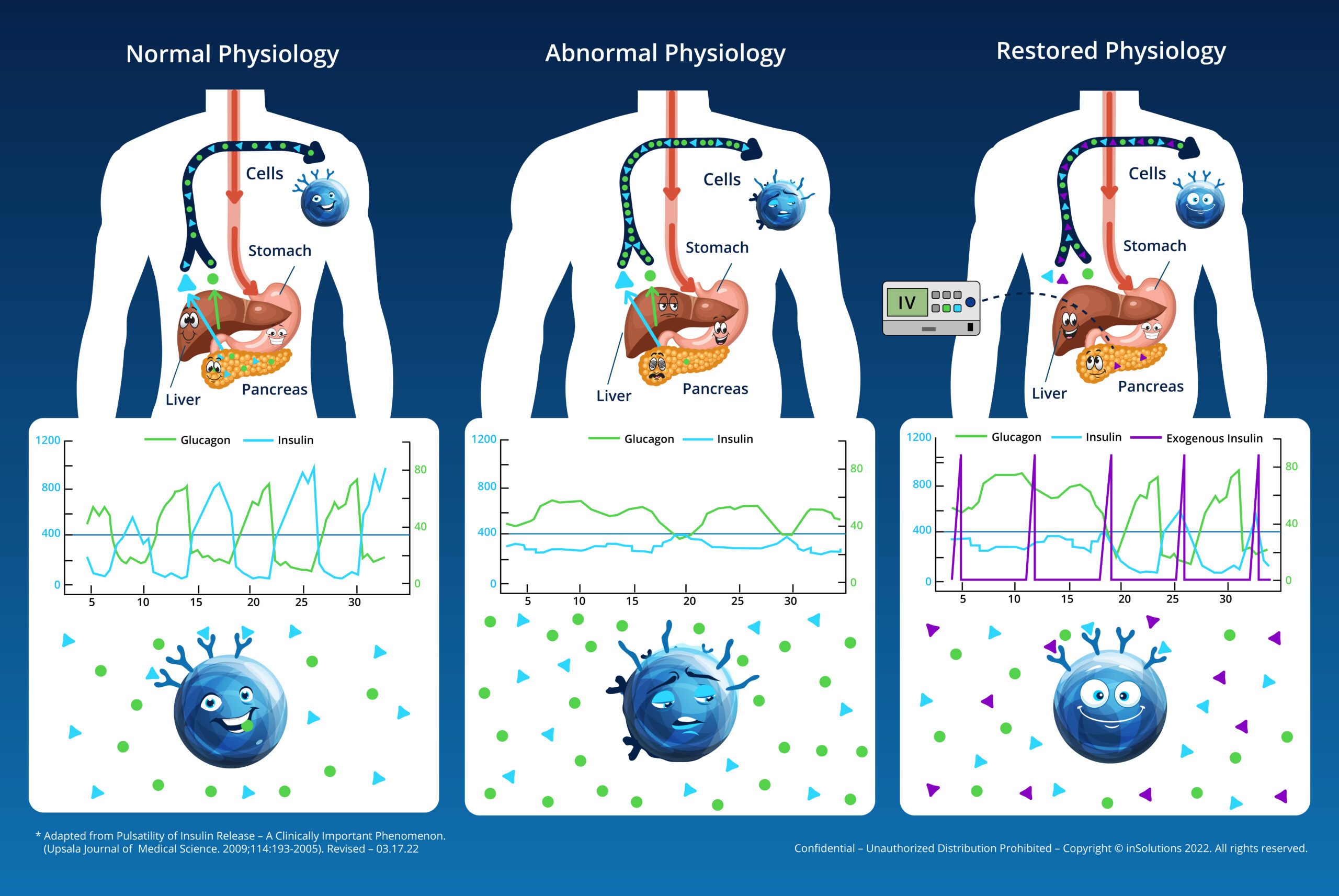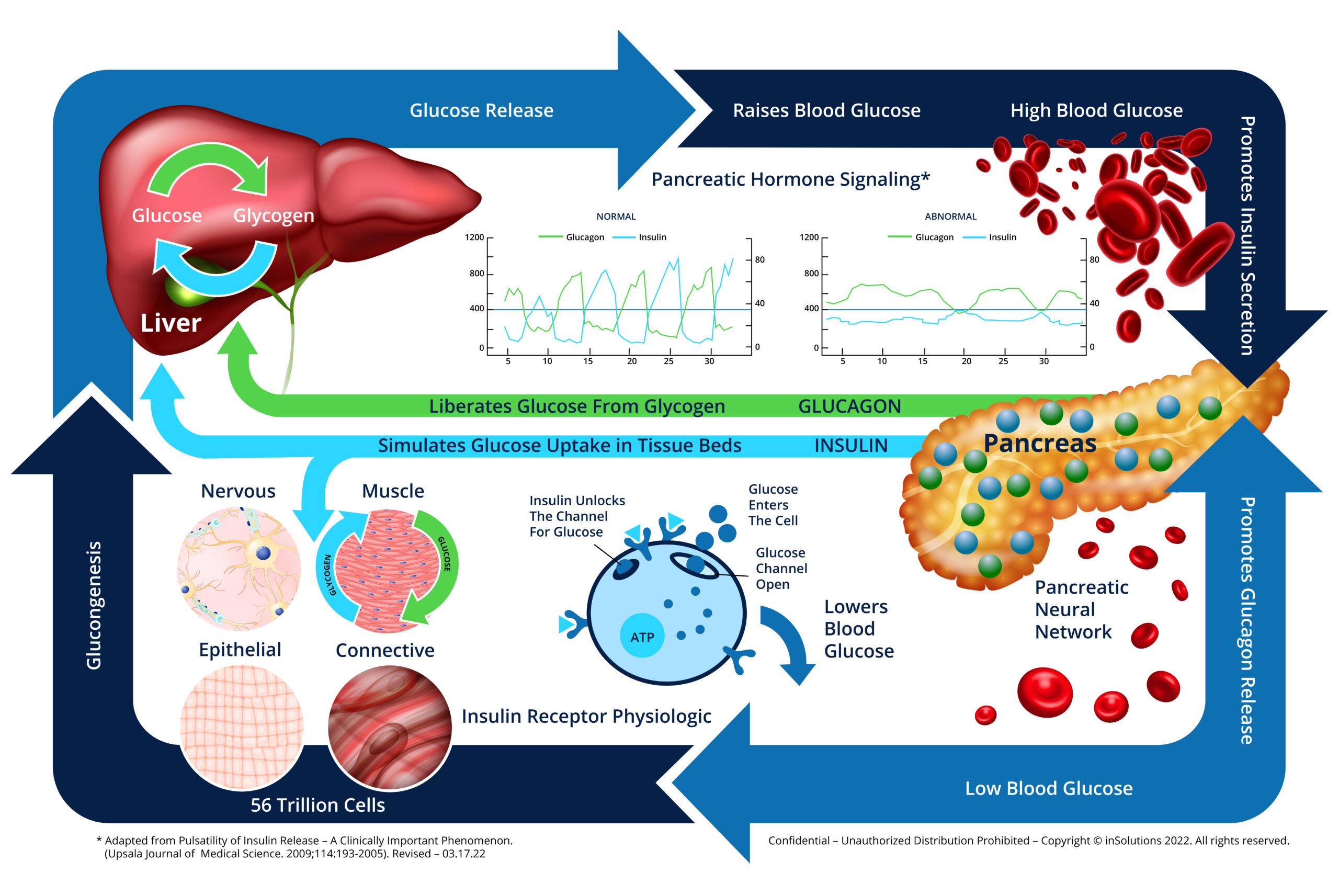Diabetes - A New Approach to an Old Problem
Welcome to Diabetic Health and Wellness
Diabetes has affected people for thousands of years; this widely misunderstood and debilitating disease causes many people to feel overwhelmed by the relentless symptoms, which can include chronic pain, fatigue, weight gain, blurred vision, headaches, brain fog, frequent urination, limited wound healing ability, and more. Often, this can lead to diabetes burnout for patients and their families.
Even with the best efforts of patients and their physicians, patients can experience metabolic failure due to the long-term destruction that the Diabetes disease process can cause.
While there is NO cure for Diabetes, we offer a better way to help mitigate the complications and comorbidities that Diabetes can cause.
Diabetic Health and Wellness is proud to offer inSolutions (insulin solutions), Wound Care, and Vein Therapy as part of our overall individualized wellness plans.
What is inSolutions?
It is a revolutionary treatment that addresses the chief cause of metabolic disorders instead of just suppressing the symptoms by using insulin as a hormone rather than a drug. By mimicking your body’s natural process, studies have shown that patients experienced:
Hormone vs. Drug
Hormone vs. Drug
Why Delivery Matters
Symptom Suppression (Drug)
Insulin Resistance is the outcome. (Insulin receptors are eliminated by constant insulin exposure.)
Communication Signaling (Hormone)
The Result
How Does Insulin Resistance Occur?
- Normal Process
- A Pancreatic Event Becomes Dysfunction
- The Cycle Begins
- A Damaging Process
- New School Thinking
- Resensitization Occurs
- Hope for the Future
Insulin is released from the pancreas in a natural continuous cycle. Insulin spikes are regulated by a natural response within the body which activates a neural network (a group of connected neurons) within the pancreas to connect beta cells (responsible for making insulin, a hormone that regulates blood sugar levels).
Pancreatic inflammation is caused by trauma (auto-immune issues, toxins, stress, obesity, etc.) This disturbs natural insulin patterns within the pancreas. When this natural insulin pattern is disturbed, hyperglycemia (too much sugar in the blood) is the outcome; insulin produced by the pancreas becomes unbalanced, and the loss of troughs causes the amount of insulin in your blood to be higher than what’s considered normal (hyperinsulinemia.)
Insulin receptors are poisoned by hyperinsulinemia, which causes them to downregulate and refract, while unopposed glucagon (a hormone that your pancreas makes to help regulate your blood sugar) levels lower the production of the receptors.
Poor receptor function is the most obvious sign of insulin resistance and eventually leads to metabolic disorders. The type of metabolic disorder is determined by genetics and differential receptor dysfunction. This chain of events determines presenting symptoms which most often cause diabetes and other metabolic diseases.
By bio-mimicking, the healthy pancreatic pathway, peripheral precision administration of physiologic insulin through an IV (also known as Physiologic Insulin Resensitization [PIR]) replenishes these lost signals to re-sensitize receptors to insulin. Receptors increase their regulation ability in response to the rhythm of random physiological insulin, which gradually restores the ability to absorb carbohydrates while decreasing inflammation caused by fat metabolism.

If hyperglycemia is present, the binding of insulin to receptors makes it easier for glucose to enter cells and relieve it. Once inside the cell, glucose is quickly processed (metabolized) through the TCA cycle and other pathways to produce ATP (adenosine triphosphate), also known as cellular energy. Energy-starved tissues can grow and heal as cellular energy from glucose metabolism becomes more easily available. For instance, neural tissues are highly sensitive to loss of energy from the metabolism of carbohydrates.
Get started today! Schedule your free consultation to see if inSolutions is right for you.
How Can I Become a Patient?
01.
Consultation
02.
Qualifying Exam and Lab Work
03.
Treatment Plan Determination
04.
Treatment Begins
What is the Typical Treatment Plan?
Induction Phase
Maintenance Phase
How Do Patients Feel After Treatment?
Patients have reported a number of improvements, including:
- Neuropathy Symptoms Improved
- Blood Pressure Reduced
- Increased Energy
- Weight Controlled
- Erectile Function Improved
- Medications Reduced
- Blood Sugar Controlled
- Mood Improved
- Sleep Improved
- Hair and Nail Growth
- Dementia Symptoms Improved
- Retinopathy Decreased
- Quicker Stroke Recovery Time
- Fatty Liver Reduced
- Wounds Healed
Frequently Asked Questions
Get the Facts on Diabetes
How many Americans have Diabetes?
What does it mean if someone is Pre-Diabetic?
Why is Diabetes such a problem?
Is Diabetes a problem in the state of Illinois?
What causes Diabetes?



